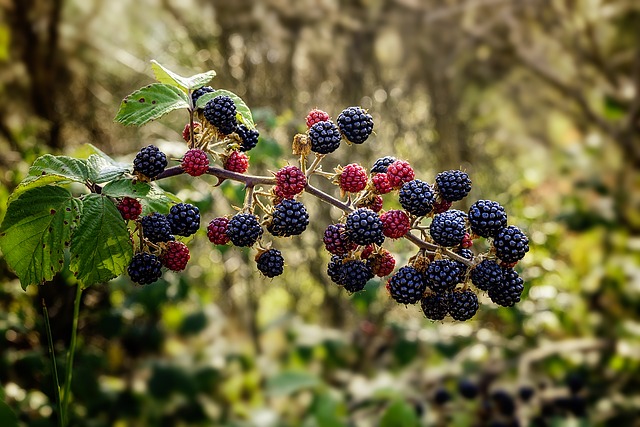Brambles, often known as a blackberry bush, is a thorny bush that produces berries that are commonly used to make pies and jam. Doesn't sound too bad right? Well, you'll be surprised to hear that brambles actually cause a lot of problems for homeowners when they begin growing in their gardens.
Similar to other types of weed such as Japanese knotweed, brambles have the ability to grow and spread at a rapid pace, particularly in gardens that are left unmanaged. Brambles can grow through shrubs and hedges and even between the cracks in broken brickwork and concrete, wreaking havoc on nearby buildings. If uncontrolled, bramble shoots can grow up to 8ft long and when they touch the nearby soil, they send out further shoots which quickly grow into a dense, thorny bush starting the process all over again. One single bramble shoot can quickly become a thorny jungle which is very difficult to firstly control and secondly eradicate once established.
So, how do you get rid of brambles in your garden once this happens? Let's find out...

Ways to remove bramble from your garden
To effectively remove brambles form your garden after they have established, you can do either of the following options:
- Use a systemic weedkiller
- Dig out the roots
Using a weedkiller to remove brambles
Just like many other types of weed, herbicides are an effective way to eradicate brambles from your garden. If choosing this method, it's very important to apply the herbicide during the brambles growing season, which typically runs from spring until autumn. Glyphosate a commonly used herbicide to treat invasive weeds as it works all the way down to the roots, so using this should help to sort out your bramble issues. For more clear instructions on how to use glyphosate, be sure to read the manufacturer's instructions.
Before applying any herbicide, however, it is essential that you cut back the stems of the bramble as this will help the weedkiller to act more effectively. Aim to cut all stems and runners to approximately six inches of the roots, then apply the herbicide thoroughly wetting the stems down to ground level. Once this is done, you can leave the weedkiller to work its magic.
Digging out the roots
When digging the bramble roots out yourself, you will still need to cut the stems and runners back, so begin by doing this. Once this has been done, you can move onto digging out the bramble stump and its roots. It's realistically going to be impossible to remove every single bit of root and you are likely to miss a bit, so keep an eye on your garden for any new growth and be sure to pull it up as soon as you do.
Once you've dug out as much of the root as possible, disposing of it in the correct way is paramount. If left in your garden, the bush will just resprout and you have to start all over again. For one or two bushes, you can cut them down into smaller pieces and leave to rot in a plastic bin bag. For larger amounts, you can either shred into smaller pieces and leave to rot in a bag also or you can burn it. Burning is the more effective option but not so friendly to the surrounding environment.
Need help removing brambles from your garden?
Of course, you have a third option to get rid of brambles from your garden and that is to get professional help!
If you have brambles growing in your garden and don't have the time to remove it yourself, Taylor Total Weed Control can help. Our team of experienced professionals are able to visit your property to establish the best course of action to eradicating any bramble infestation. We can quickly assess the infestation and devise an effective plan to remove the bush, whether that be via herbicide or excavation. You can find more information on how we can help you below.
Ground, Field & Garden Clearance >
If you'd to ask us any more questions on how to get rid of brambles from your garden, you can also get in touch with us via our contact page - we're more than happy to help!
